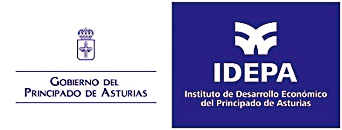DAMTAQ: Data fussion methodology for remote monitoring of water quality in reservoirs
IDE/2022/000558
Project co-financed by the Government of the Principality of Asturias through IDEPA, the Science, Technology and Innovation Plan (PCTI) and the European Union through ERDF funds.



Controlling and guaranteeing the quality of inland waters is one of the development and sustainability challenges that is currently having the greatest impact. By way of reference, this challenge is recognised by the UN in its 2030 agenda as one of the 17 Sustainable Development Goals, specifically in goal 6 « Clean Water and Sanitation ».
One of the most important problems in the field of quality control is the so-called eutrophication process of impounded waters. This process is caused by an excess of nutrients such as nitrogen and phosphorus in the water, mainly due to human activity, which results in the contamination of the water in the reservoir. In Spain, this problem is particularly relevant, given that it has a total of 371 reservoirs and a combined capacity of 56,000 cubic hectometres, making Spain the country with the fifth largest number of this type of infrastructure and the first in the European Union.
In this situation, the use and availability of tools aimed at automation in the diagnosis and prediction of pollutants and water quality can be a great advantage in meeting this challenge. This is precisely what is proposed by the DAMTAQ project, which aims to provide a methodology that allows the management and analysis of multiple sources of information related to the quality of reservoir water in order to derive relevant results. The overall objective is the remote monitoring of water quality in reservoirs, for which a low-cost sensor and communication solution will be investigated and the use of remote sensing and satellite data, the application of data analysis algorithms and the combination and correlation of different sources of information to generate indicators and guide decision-making will be addressed.


 Infrastructures Électriques
Infrastructures Électriques 
 Industrie
Industrie Gas to Power
Gas to Power